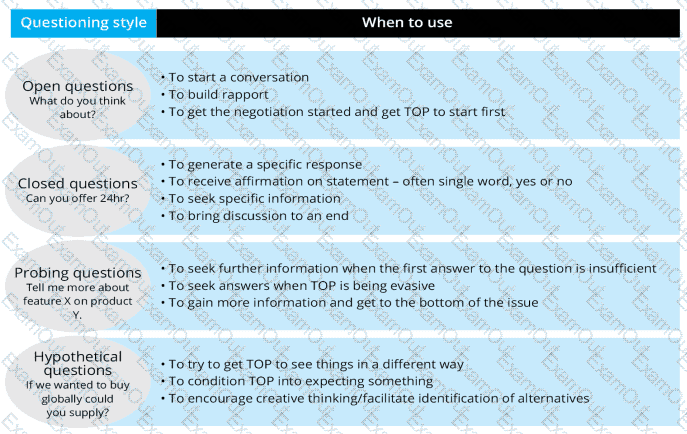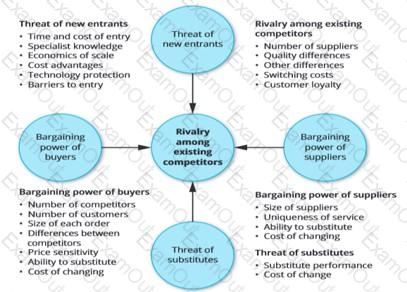Which of the following are most likely to be the potential cultural differences that can make transactions with an international supplier more problematic that with local suppliers? Select TWO that apply.
There are no commitments in hypothetical questions. Is this statement true?
Premium pricing strategies used by suppliers are characterised by which of the following? Select TWO that apply.
XYZ Ltd decides to go to market for a cleaning contract to service a number of offices. It knows that it will get a price which may, or may not, be better than the one it is currently paying. To gain leverage in the marketplace, the organisation decides to add other related services to the scope, such as gardening, security and maintenance, which increase the value of the contract. This is an example of which forms of spend consolidation?
A skilled negotiator will use a range of questioning techniques in a negotiation. If they wished to explore options with the other party without making any formal commitment, which type of question style would they use?
How can having a best alternative to a negotiated agreement (BATNA) support the buyer in a negotiation? Select THREE options that apply.
Fast & Easy Limited, a global fast food retailer, is in a negotiation with its major meat supplier. The supplier is asking for a 2% price increase, which Fast & Easy is strongly resisting. The supplier justifies this increase by stating that currency fluctuations, an unstable economic climate, and rising transport costs have necessitated this increase. Which influencing tactic is the supplier using?
Lina Rawlins, a senior buyer, asks a supplier: “Can you tell me exactly what you are doing to ensure quality?” What type of question is this?
Sumitomo Rubber Industries (SRI) is a Japan-based tyre manufacturer. In order to increase production, SRI is sourcing rubber from Southeast Asian firms. Which of the following micro factors are most likely to shift the balance of power to supplier? Select TWO that apply
Which of the following are the most typical characteristics of integrative approach to negotiation? Select TWO that apply.

 Text Description automatically generated
Text Description automatically generated Diagram Description automatically generated
Diagram Description automatically generated